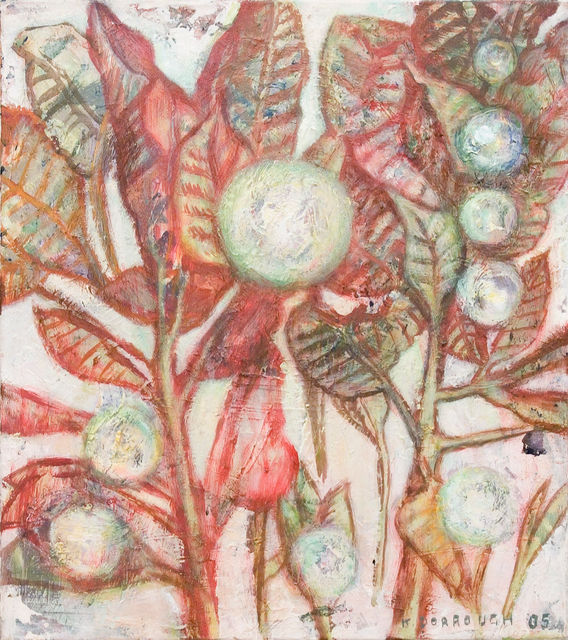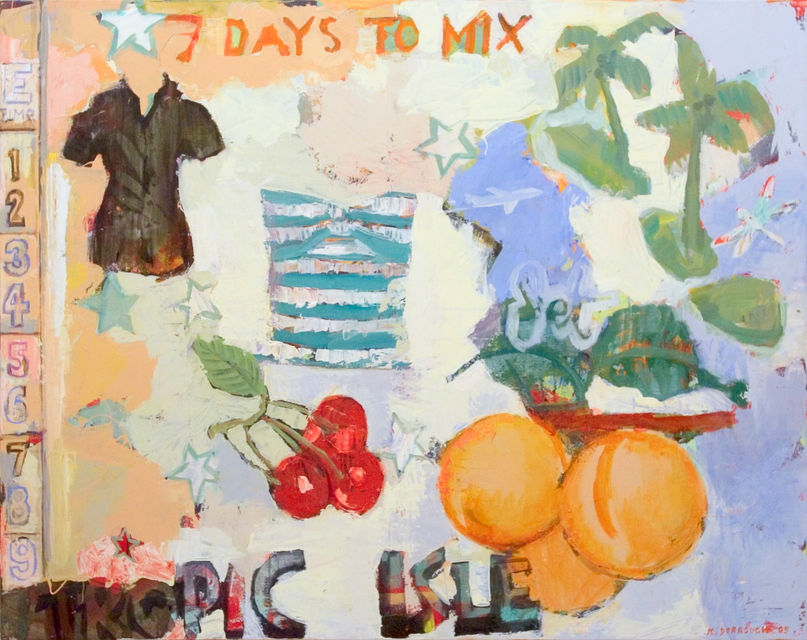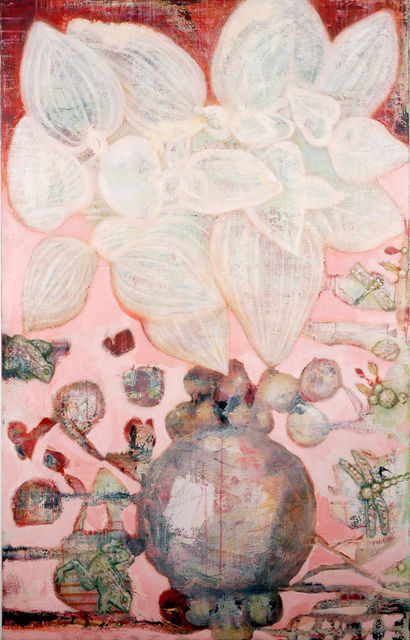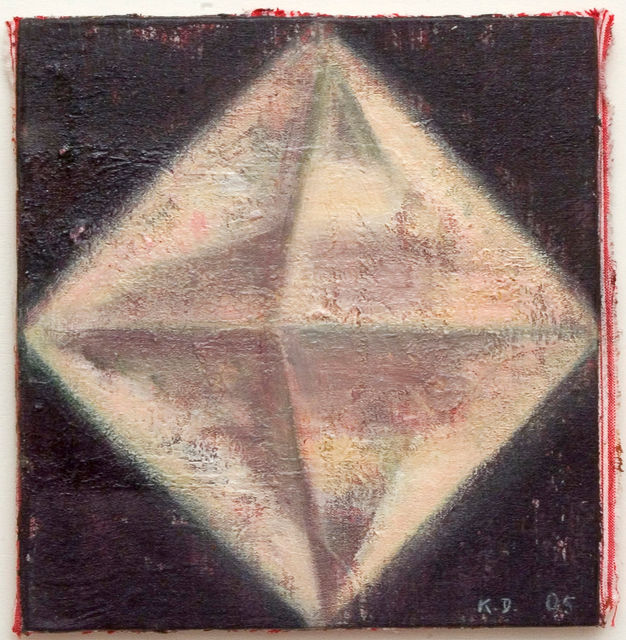Gallery Menu
Pants Off
Arthouse Gallery, 2010
ARTIST STATEMENT
“Pants Off’ is an exhibition of ceramic figurines inspired by the traditional English nineteenth century Shropshire figures of courting couples and pagan shepherds and shepherdesses.
The figurines unashamedly remove their clothing to reveal a previously concealed sexuality subverting the traditional constructs of romantic courtly love.
These playful works proclaim a sense of naivety in their execution and personality, as the localised Shropshire ceramics were in contrast to the rarefied cast porcelain figurines of the eighteenth-century German Meissen and French Vincennes and Sevres factories. These figures depict an innocent enjoyment of sex and sexuality. It is a celebration of sexuality as inclusive, part of life, as in ancient classical origins with its celebration of the phallus, as opposed to the binary polarities of a Christian tradition.
These figurines are accompanied by representations of nature, with supporting trees and stumps sprouting new growth of leaves and flowers, suggesting spring with its association of fertility and renewal. The titles of the works also reveal a political intent, playfully commenting on the machinations of the art world, what’s hot and what’s not, the fashionable and the sexiness of the art market. Figurines often historically acted as a form of social commentary and courtly entertainment. Like small staged representations they act as parables, in this case telling tales of the art world. These works are about appearances, each figure strikes a pose.
These seemingly decorative figurines which once graced the mantelpieces of respectable homes now are sexy parables of our time.
In Stillness
Edwina Corlette Gallery, 2009
ARTIST STATEMENT
The starting point for all visual imagery is the relationship between form and space, as defined by light. These simple truths of the conditions of our seeing are central to the artwork of Kate Dorrough.
Her project is to strip away what is extraneous so that the basic elements of what is visual can be revealed.
For Dorrough, this is a process of letting go, of creating a space in which shapes and colours can 'breathe. It is also a process of slowing time, and bearing witnessing to the unfolding dimensions of the picture plane. Working and reworking the surface of her paintings, Dorrough builds and illuminates her richly hued and textured constructions.
Partly inspired by the rudimentary shapes of vessels and vases found in archaeological digs, and partly by the totemic quality of ancient architectural relics, these abstracted spaces and iconic forms speak of presence and absence in ways that are inordinately human. They bid us to momentarily put aside our contemporary penchant to verbalize and categorize, and to contemplate the ineffable and irreducible quality of 'presence'.
relics, these abstracted spaces and iconic forms speak of presence and absence in ways that are inordinately human. They bid us to momentarily put aside our contemporary penchant to verbalize and categorize, and to contemplate the ineffable and
Ode to Light and Slow Time
Arthouse Gallery, 2008
ARTIST STATEMENT
This exhibition has been inspired by the ceramic vessel. Having recently experimented with ceramics I have delighted in the sensual materiality of clay. I have transferred this physicality to the directness of paint, allowing the unpredictable process of push and pull to evolve form on canvas.
The works are also inspired by my previous travels to Greece, and my experience working in a drawing team on an archeological site recording ceramic vases and vessels. The history and resonance of these forms has always fascinated me. The vessel as container is associated with nourishment, and has a symbolic reference to the human body.
I wanted to capture a monumental quality in these vessels, in scale and as a simplified totemic forms. The scale is suggestive of the human figure, evoking an architectural presence.
The simplicity of the colour white is important, capturing a sense of light and space to breathe. To this I added the clarity of bright strong colours, and then the texture echoing crumbling walls, and layers built up over time.
The Cup
Melbourne Art Rooms, 2006
ARTIST STATEMENT
“The exhibition of ceramics by kate Dorrough is inspired by the sporting and social institution, the Melbourne Cup.
The hand painted ceramic cups and vases are accompanied by paintings which depict the action and personalities from the track.
The playful use of the cup signifies this famous horse race. Different ceramic forms are explored to capture the atmosphere of frivolity and celebration. Images of fashion, hats and horses create an interplay between the two and three dimensional form.
The wheel thrown ceramic forms are designed and painted by Kate Dorrough and thrown by the production thrower, Jock Smeild. Initally painted with underglaze paints the ceramics are futher refined with clear glaze, gold and bronze lustre firings and at times the addition of playful childrens plastic horses or artifical flowers.
The Garden
Beaver Galleries, Canberra , 2005
ARTIST STATEMENT
Sydney based painter Kate Dorrough depicts lush vegetation in her latest series of paintings, using 'the garden' as a metaphor for imagination, growth, regeneration and change. Added portraits of women reference fertility, fruitful abundance and recall the domestic sphere in which nature is ordered. The opulence of eighteenth century European salons - where even the wallpaper depicts pastoral and Arcadian mythologies - casts an ongoing influence over works produced following Kate's stay in Paris during residency at the Cite Internationale des Arts.
The salon was a domestic interior setting, traditionally associated with the feminine, providing a domain for entertainment and pleasure. Plants are often presented in a formal sense, echoing the portraits of women and scientific methodology. The botanical tradition of classification and collection of plant species is a reference point in the work, where an individual plant stands as a portrait. These paintings are themselves a rich and fertile ground for ideas and imagination, containing layers of meaning beneath the rich surfaces and textures of the canvas.
Early Work: 1996 - 2010
Hearts are Trumps
Arthouse Gallery, 2005
ARTIST STATEMENT
The exhibition, ‘Hearts are Trumps’ are a playful and energetic series of paintings exploring the symbolic nature of the game. The card game in all its manifestations; Gin Rummy, Bridge, Five Hundred, The Board game, Checkers, Monopoly, the nature of score keeping, and the up and downs of the cards of life.
The game highlights the central theme of luck and chance. With the roll of the dice the outcome or fate in unknown.
Kate’s work has a theatrical quality which is highlighted by the vibrant use of reds, pinks and oranges. The bright emblematic motif of fruits suggests the gambling floor and slot machines, or the abundance of a bourgeoning garden, signifying prosperity and promise of good things to come.
Imagery from our contemporary life are sourced from the supermarket isles for fruit bar packaging, party paraphernalia, glossy magazines, fashion with in signatures of dragonflies and butterflies, post cards celebrating the Queensland sunshine with tropical fruits. Imagery which all refer to historical metaphors and subtexts of the Garden of Eden, or Earthly Delights. It is world of layered imagery and representations of chance in the dating game, where hearts lead the way to a cornucopia of life and all it can offer.
Fetes Galantes
Arthouse Gallery, 2004
ARTIST STATEMENT
These expressive works by Kate Dorrough embody the whimsical and fantastical referencing the eightieth century Rococo period and paintings of Jean Antoine Watteau's and his" Fetes Galantes" series. In the spirit of ornamentation and frivolity, fanciful outdoor settings celebrate a journey to a dream like 'Arcadia and joie de vivre'.
The natural world and 'Nature' is ever present where exotic vines bloom and traverse the canvas.
Fresh young leaves and shoots evoke Spring symbolising renewal and new beginnings.
Burgeoning plant forms reveal glimpses of hidden pearls, lucky charms and decadent gems.
Her work explores the relationship between plants and ornamentation, where jewellery and jewellery design echo natural forms from the eighteenth century to celebrated jewellers of the 20th century such as Tiffany and Cartier.
The work highlights concepts of the 'natural' in conjunction to the artificial, and notions of 'artifice' an essence of the Rococo period. Alongside the theme of Masquerade and make believe, Dorrough plays upon the notion that nothing is ever quite what it seems.
Whims and Fripperies
Arthouse Gallery, 2002
ARTIST STATEMENT
Exploring the world of the Rococo and eighteenth century Parisian court Dorrough's works are inspired by a residency at the Cite Internationale des Arts, in Paris. The Salon was the domain and opportunity for female power and influence. Being a setting and offering a focal point for conversation, debate, political and personal intrigue.
The art of playfulness and frivolity extends to the theatrical where powdered wigs and the artifice of the masquerade reveal portraits of women in elaborate costumes exhibited alongside hand painted teacups in reference to the Salon and the Sevres decorative porcelain. Wallpapers inspired by the eighteenth century colonial France reveal the exotic or other, these painted canvases creates a backdrop to this feminine world.
Cafe
Arthouse Gallery, 2000
ARTIST STATEMENT
ArtHouse is pleased to announce the opening of Cafe, and exhibition of paintings by Kate Dorrough. Cafe evolved initially from Kate’s experiences in Paris while completing a residency at the Art Gallery of New South Wales studio at the Cite International des Arts.
Drinking coffee, sketching the patrons and watching life go by in the local cafes became part of her everyday ritual in Paris, London and New York and continued when she returned home. Cafe represents her observations of Sydney cafe society. The exhibition explores the scope of Sydney’s cafe scene from the founding establishments such as bar Coluzzi and Bar Italia to the classic cafes, Bill and Tony’s and Cafe Hernandez and the latest including Bill’s and Aqua Bar. The works are rich and textual reflections of the cafe culture that has historically captured the imagination of so many artists.
"I have always loved the atmosphere of the cafe. It is both a social and a private space. A meeting place and a centre point for a divergence of people from all walks of life. The cafe is a place to; talk, listen, eavesdrop, gossip, watch and a place to be; seen, to read, to day dream, a place of tersire and increasingly a place of work, the business meeting, doing lunch and even the interview"
Kate Dorrough
"Kate Dorrough sips the sharp flavours and scours the buzz in our most intimate public space.
She turns space into a sound as we work, as we meet, as we linger, in our favourite cafes. Her art maps a new urban landscape, at once so familiar and so furtive."
Neil James, author, 'Sydney cafes'
Suburban Scene
Access Contemporary Art Gallery, 1999
ARTIST STATEMENT
The suburban landscape is a potent and ambivalent symbol. Once the representations of the progressive spirit, an Arcadia symbolising a place of refuge and peace, to the mundane, a place of uniformity and a restrictive conservatism.
For me the suburb can represent a celebration of the everyday, acting as a reminder of both past and the present.
The works reference the architectonic and monumental, where buildings of the suburb become iconic monuments. It is a memorial to the human presence, where past lives are still present in this emblematic 'home' setting.
Side Show
Access Contemporary Art Gallery , 1997
ARTIST STATEMENT
The side show, a place of curiosities, absurdities, fun and intrigue. Sparkers draw in the crowds while acrobats, boxers, clowns, trapeze artists, horses and animals perform and dance between rows of tents or in the streets of the agricultural show.
"At camps between towns, young and budding performers practiced their routines before the evening meal. In this way the circus skills were not only developed, but shared and passed on from generation to generation. A rope walker might sling a rope between two gum trees and practice upon it as the evening meal was
prepared, with melodies from cornets and euphoniums filling the air as if in accompaniment, as the circus bandsmen practice too ...."
'Children of the Circus - The Australian Experience', John Ramsland with Mark St.Leon, 1993, p12
Bronte Bathers
Access Contemporary Art Gallery , 1996
ARTIST STATEMENT
My work is inspired by the surroundings in which I live, by the ocean at Bronte Beach, Sydney.
The beach becomes a focal point of social interaction and a private sanctuary.
The figures bathe in a setting reminiscent of a theatrical stage set united by the encompassing body of water. Inspired by my recent travels to Greece and the historical ritual and social significance of 'bathing', the figures are set against a backdrop of local arches and rock formations by an ocean pool suggesting classical architectural and sculptural forms.
The beach is a time for leisure, where the social costumes of the working day are shed and bathers are united by the sea, offering a place of restoration and contemplation.













































































































































